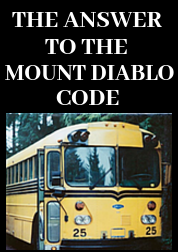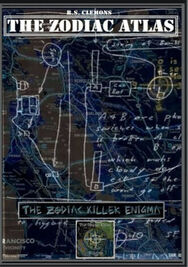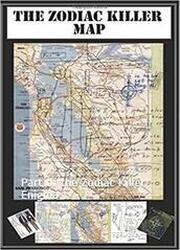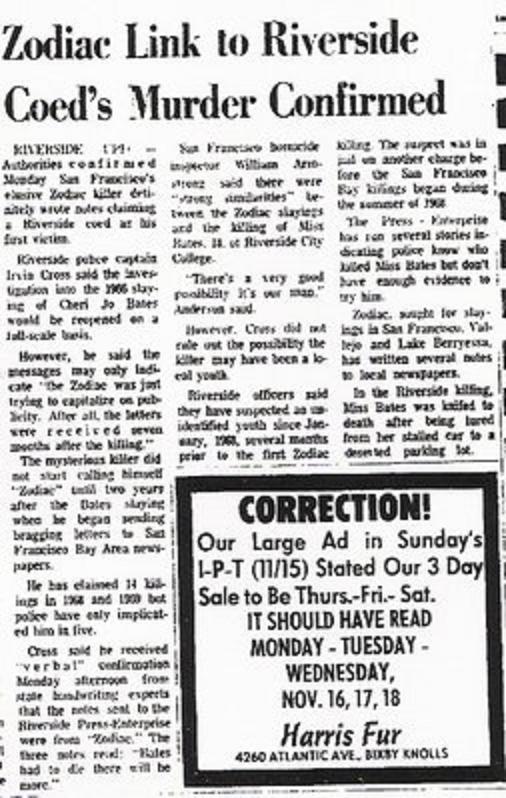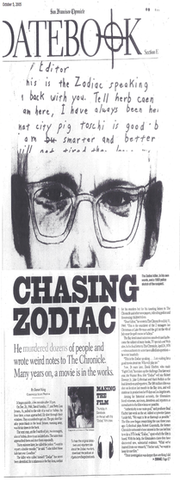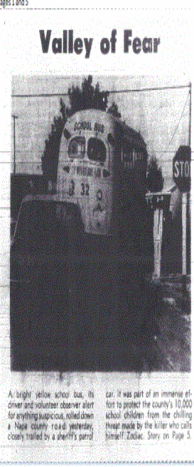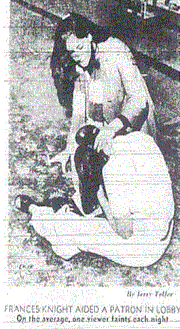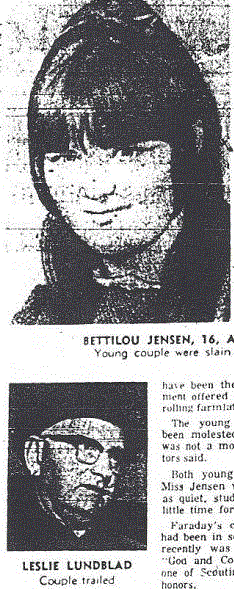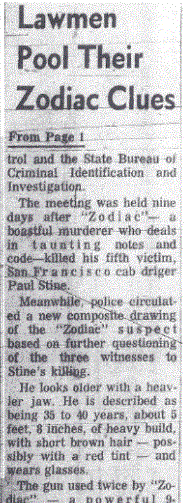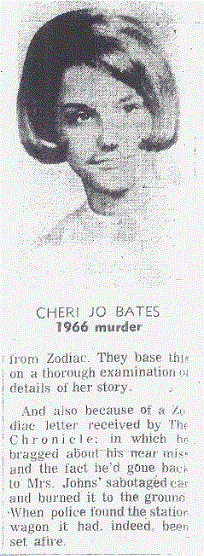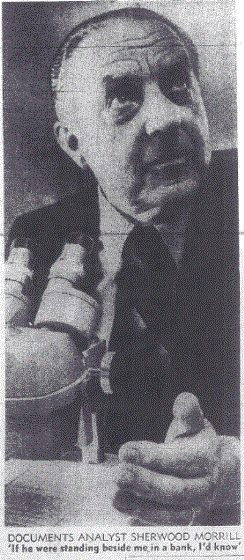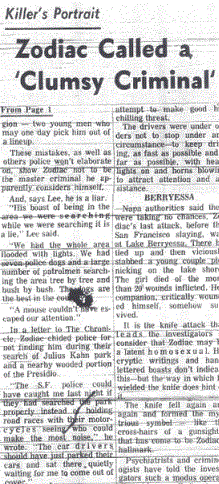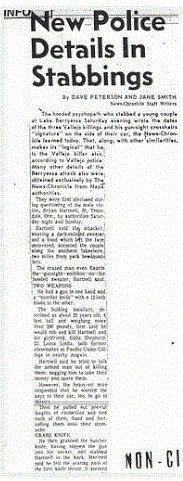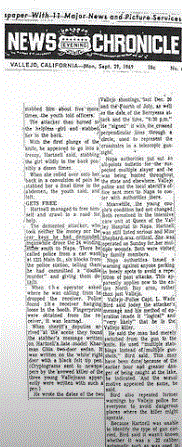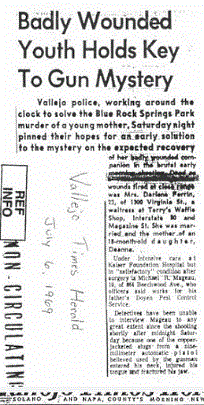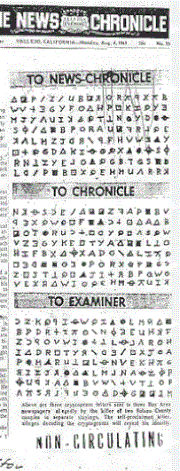The first thing to consider is the trusted geographic profiling technique of the 'least effort principle,' and the high probability that the Zodiac Killer had a standard 9-5 occupation, which seemed to govern his actions during all four of his attacks. This is not a giant leap of faith, bearing in mind that a serial killer will often begin his crimes close to home, before venturing further afield, based on a 'buffer zone', that generally facilitates a safe and speedy return once the crime has been committed - but obviously, not too close as to wipe your feet on the front doormat. Taking this as our rule of thumb; if the Zodiac Killer had finished his working week on Friday at 5:00 pm, then using the 'least effort principle' and 'buffer zone' as a template, one would expect the Zodiac Killer's first crime to be relatively close to home - especially considering he had finished work that same day. If he lived in the southern reaches of Benicia, then the Lake Herman Road double murder of Betty Lou Jensen and David Faraday on December 20th 1968, just a few miles away, seems to fit the bill. It would not be too close to home, while allowing for a relatively short journey time of 10 minutes to the perpetrator's residence. Bearing this in mind, his first two attacks would have been chosen using this 'least effort principle,' as both were on a working day, both were on a Friday, and both crimes fell within a 10 mile radius of the lower region of Benicia. His rest day of Saturday would facilitate his ability to travel further afield, firstly to Lake Berryessa on September 27th 1969 and culminating with the Presidio Heights murder of Paul Stine on October 11th 1969.
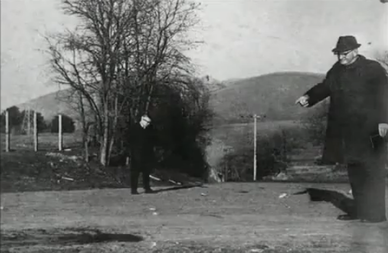
Lake Herman Road is a two-lane, secluded and unlit road, infrequently used by commuters in 1968. Somebody who lived in San Francisco would have been unfamiliar with this road, unless of course they had previously lived in the Vallejo or Benicia regions. Furthermore, it flies in the face of what we assume was the Zodiac Killer's first crime, in that the 'buffer zone' is unnecessarily lengthy and risky - and the 'least effort principle' has seemingly been abandoned.
The distance from the nearest point of San Francisco to Lake Herman Road is approximately 32 miles, or a journey time by car of about 50-60 minutes. The Zodiac Killer may have lived in Vallejo, but his actions after the double slaying at Lake Herman Road spoke volumes. He exited the turnout and headed east to Benicia. This was explained in a previous post entitled 'East to Benicia', and here is a small portion as a reminder: Eyewitness testimony from the Lake Herman Road murders suggested a very small window of time the Zodiac Killer had available to him to escape detection - but one eyewitness, that of Stella Borges, was the most crucial of all. A second eyewitness, James Owen, passed the turnout heading towards Benicia (calculated by police to be 11:14 pm), and he saw no victims in or around the vehicles. Stella Borges, in a revised timeline, passed the turnout at approximately 11:20 pm and saw both victims, David Faraday and Betty Lou Jensen lying on the gravel turnout. Based on this chain of events, the earliest the Zodiac Killer could have murdered the young couple and started to leave the turnout would have been 11:15 pm. Stella Borges, it was estimated, left her ranch at 11:15 pm heading towards Benicia. She reported passing no vehicles en route. Therefore, the Zodiac Killer could not possibly have headed towards Vallejo along Lake Herman Road based on these timelines. The only possible scenario using the testimony of these eyewitnesses, is that the Zodiac Killer headed in an easterly direction towards Benicia and the relative safety of home.
After committing two brutal murders and possibly having received biological transference from the close contact murder of David Faraday, in addition to the sound of at least ten shots on a still dark night - and almost certainly still in possession of a .22 caliber weapon - it would have been hard to imagine a killer heading in the opposite direction to his home residence, thereby risking a prolonged period of detection, and in all likelihood ruling out Vallejo as the home base for Northern California's most elusive serial killer.
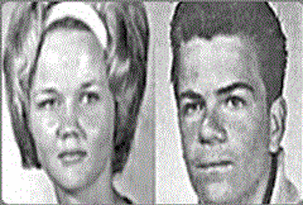
What the Zodiac Killer stated in his 'Debut of Zodiac' letter, exactly one month after this attack is crucial. He stated "I did not leave the cene of the killing with squealing tires + raceing engine as described in the Vallejo paper. I drove away quite slowly so as not to draw attention to my car. The man who told police that my car was brown was a negro about 40-45 rather shabbly dressed. I was in this phone booth having some fun with the Vallejo cop when he was walking by. When I hung the phone up the damn thing began to ring & that drew his attention to me + my car". No mention of a negro male is detailed in the police report or newspapers - and quite frankly - why would the Zodiac Killer refer to this eyewitness at all, if indeed there ever was one? It appears on the face of it, to be providing police with unnecessarily helpful details of a man seen by the Zodiac in the area of the payphone, thereby aiding their investigation in locating a second key eyewitness in the aftermath of the crime. But it is the detail of the description that raises a red flag. The author of the 'Debut of Zodiac' letter describes his age as 40 to 45 - a rather superfluous and unnecessary detail to highlight - as his age was irrelevant.
The letter further described the nature of his clothing as "shabbly dressed", again raising suspicion as to whether this eyewitness was simply fabricated. The Zodiac Killer also overtly emphasizes the fact his car was brown, pointing out that when he hung the phone up "the damn thing began to ring & that drew his attention to me + my car". The Zodiac Killer once again tags his vehicle into the narrative, highlighting "me and my car", when there was no reason to add 'my car' to the end of the phrase. That is, unless he was employing a double bluff, in that he was telling the truth, but wanted it to be perceived as a lie. Had the police believed as many have, that the killer would have wanted to get rid of the 'smoking gun' as soon as possible, after what he thought was the murder of two young people at Blue Rock Springs Park, then this unexplained 30 minutes would not have gone unnoticed by law enforcement. His seemingly inflated description of the payphone incident may have been Zodiac misdirection at its best - and he had actually driven straight home after the Blue Rock Springs attack, changed his clothes, dropped the weapon, readied himself, and walked back to the payphone. After all, police would have been looking for a murderer in possession of the 'smoking gun,' so being on foot, having discarded his car, clothes and weapon, the Zodiac Killer would now feel far more confident. Is this what the Zodiac Killer had hoped police would believe? Had he wanted to guide them into disbelieving what he wrote and center their focus within a walking distance of the Springs Road and Tuolumne payphone?
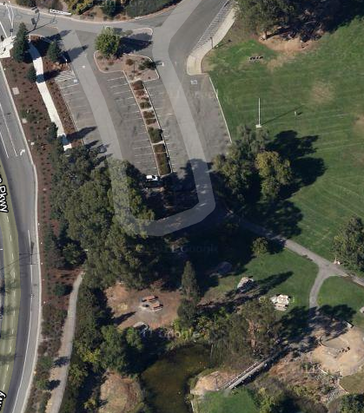
However, it should be noted that the traveling time from Blue Rock Springs Park to southern Benicia and back to the Springs Road and Tuolumne Street intersection (with 10 minutes turnaround at his possible home residence), is 38 minutes by car - almost giving us the time difference between the Blue Rock Springs attack and the phone call to Nancy Slover. The Zodiac Killer's intention may have been the same after the Lake Herman Road murders, in that he wanted to discard his weapon immediately, but by traveling back to this particular payphone after the attack at Blue Rock Springs Park, his intention may have been to create a red herring and divert the attention of police towards Vallejo.
In the 'Debut of Zodiac' letter, the author gave us the line "I did not leave the cene of the killing with squealing tires + raceing engine as described in the Vallejo paper", making sure it was understood, that he did indeed read the Vallejo paper and so cement his ties to this particular location even further. In the 'Bus Bomb' letter mailed on November 9th 1969, he rammed home the message once again: "Have fun!!. By the way it could be rather messy if you try to bluff me. PS. Be shure to print the part I marked out on page 3 or I shall do my thing. To prove that I am the Zodiac, Ask the Vallejo cop about my electric gun sight which I used to start my collecting of slaves". The message seemed loud and clear - the Zodiac Killer lived in Vallejo.

We can carry this premise into the double stabbing at Lake Berryessa on September 27th 1969 and the disposal of the knife, gun and the executioner's costume, which in this case, were the totality of the 'smoking gun'. Access in and out of Lake Berryessa via the Knoxville Road was limited, with a 27 mile journey (48-50 minutes) ahead of the killer to the payphone at 1231 Main Street in Napa.
After the Lake Berryessa attack, the killer wrote on the car door of Bryan Hartnell's white Karmann Ghia, indicating the time of the attack was 6:30 pm. Of course, this may not be true or accurate - the attack may have been at 6:30 pm, but he may have written the message on the car door at 6:40 pm after traveling back up the hillside after the brutal stabbing. But using this as our guideline, the 50 minute journey to 1231 Main Street, where he placed his second phone call, would have placed him at the payphone at approximately 7:20 pm. Crucially though, this phone call was logged at 7:40 pm, leaving us with a possible 20 minutes of unaccounted time. If this is the case, what was he doing during this crucial period. Even allowing for his removal of the costume and any reconnaissance at the payphone, there is still a measurable ambiguity. The Zodiac Killer must have conceived that if the victims had been discovered quickly and radioed in, his 50 minute journey was fraught with danger - particularly along the initial part of his journey along the Knoxville Road. Being stopped with a blooded knife and executioner's costume would take some explaining. Had he kept hold of them all the way back to the Vallejo/Benicia areas, then the phone call at Napa would have placed him in further danger. Police, having possibly discovered the car door, and already aware of the Zodiac Killer's previous crimes in Benicia and Vallejo, would know his quickest route back to this region - in all likelihood, the primary route of California State 29, leading straight back to Vallejo and Benicia
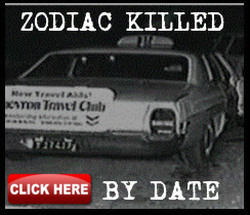
The murder of Paul Stine in Presidio Heights could have followed the same template - a speedy exit through the park to his waiting car, across the Golden Gate Bridge and subsequent disposal of his weapon at the earliest possible convenience.
However, there is an alternative to the 'lost' 20 minutes at Lake Berryessa:
http://www.zodiacciphers.com/zodiac-news/lake-berryessa-north-of-the-crime-scene
http://www.zodiacciphers.com/zodiac-news/lake-berryessa-north-of-the-crime-scene-pt2




 RSS Feed
RSS Feed

